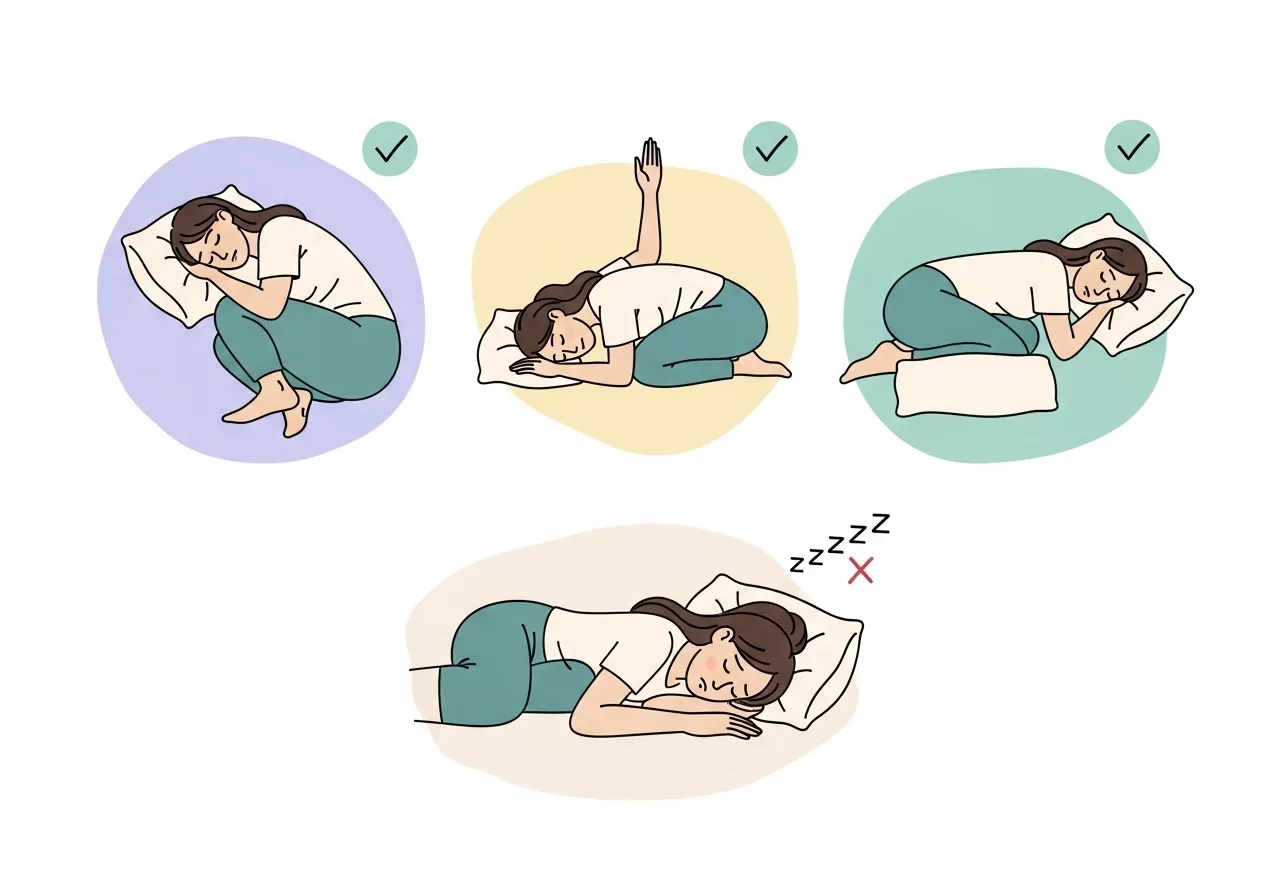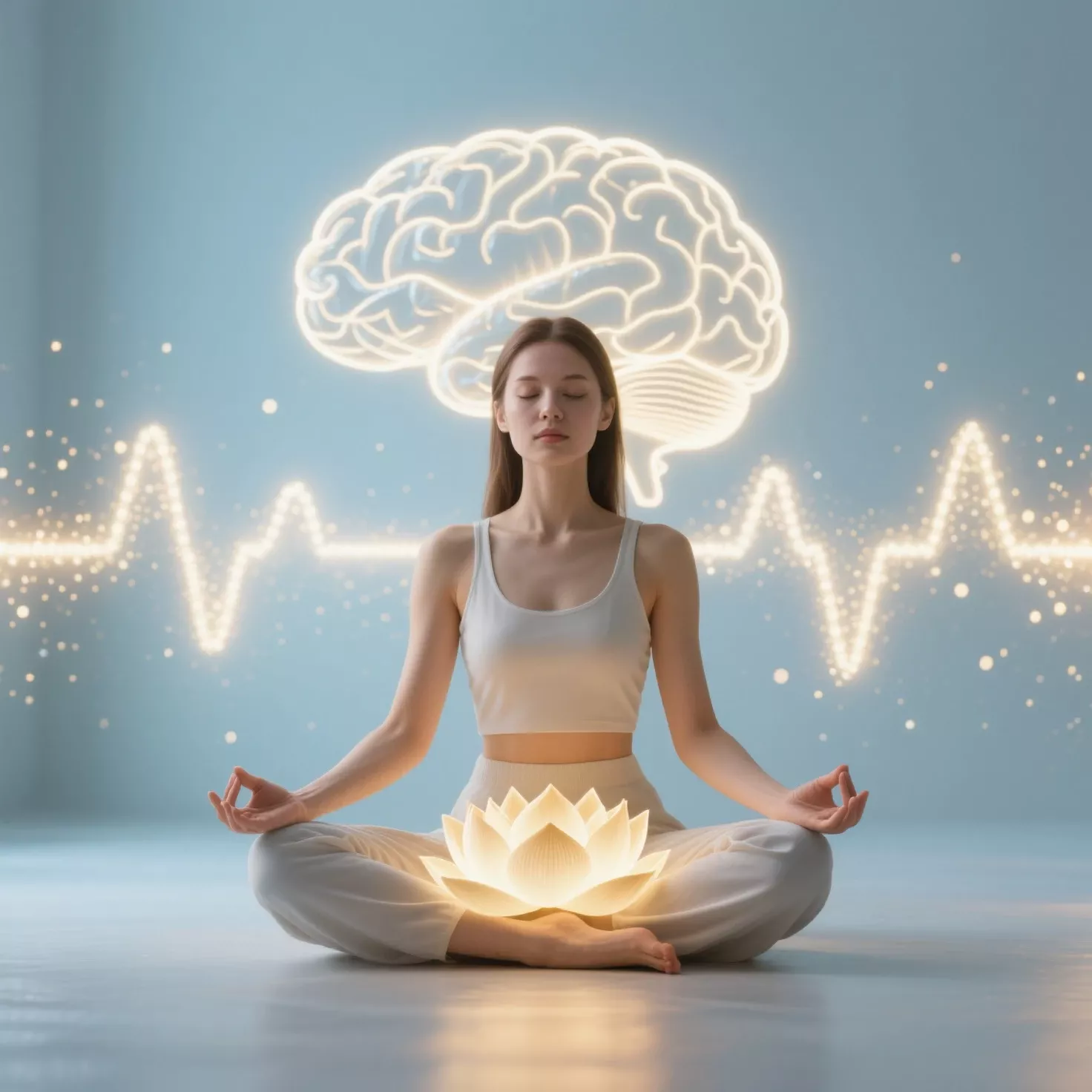As we age, maintaining flexibility, strength, and balance becomes increasingly important for overall health and quality of life.
Yoga provides an accessible way to achieve these benefits, with specific styles catering to the needs of older adults.
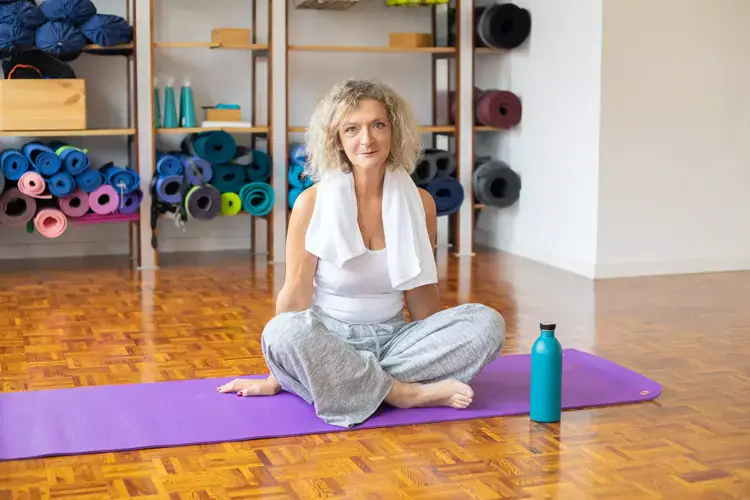
Below, we delve into three yoga styles—Chair Yoga, Gentle Yoga, and Therapeutic Yoga—that are particularly well-suited for seniors.
1. Chair Yoga: Yoga for Stability and Comfort
Chair yoga is a modified form of yoga where the poses are performed while seated or using a chair for support.
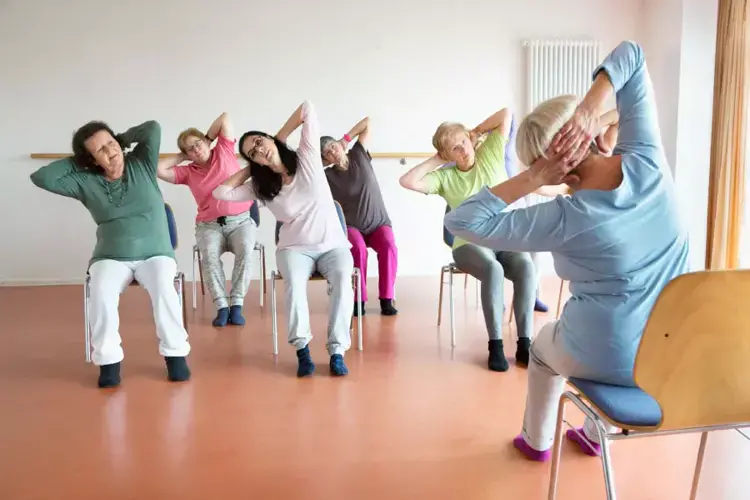
It’s designed to make yoga accessible for those who have mobility challenges, difficulty standing for extended periods, or issues with balance.
Key Benefits:
- Improved Flexibility: Chair yoga helps loosen tight muscles and improve joint mobility, making everyday movements easier.
- Enhanced Balance: Using the chair for support allows seniors to safely practice poses that enhance balance and coordination, reducing the risk of falls.
- Increased Circulation: Gentle movements stimulate blood flow, improving cardiovascular health.
- Reduced Joint Pain: By encouraging movement without strain, chair yoga can alleviate discomfort in joints, particularly for those with arthritis.
Sample Poses:
- Seated Cat-Cow Stretch: A gentle flow to loosen the spine and reduce stiffness.
- Seated Forward Fold: Encourages a stretch in the back and hamstrings while keeping the body supported.
- Chair-Assisted Warrior Pose: Builds leg strength and enhances balance with the chair as a stabilizing aid.
2. Gentle Yoga: Yoga for Relaxation and Low-Impact Benefits
Gentle yoga is a slower-paced style that focuses on easy, deliberate movements and prolonged poses.
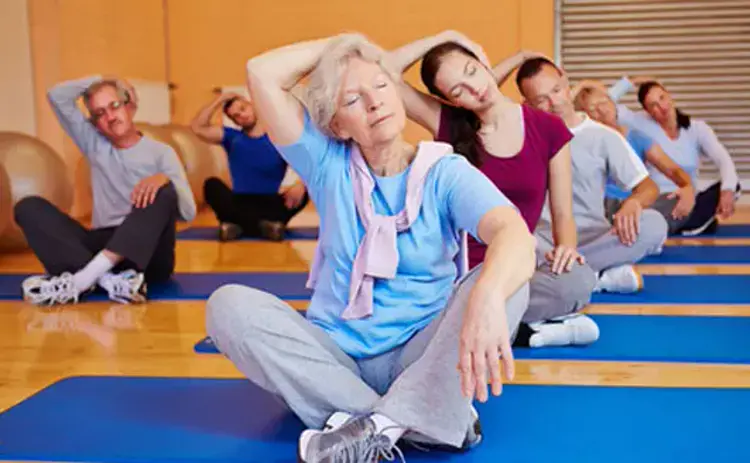
It’s ideal for seniors who want to maintain or improve their mobility without putting excessive stress on the body.
Key Benefits:
- Stress Relief: The slow, mindful nature of gentle yoga promotes relaxation and reduces anxiety.
- Improved Range of Motion: Regular stretching and low-impact exercises increase flexibility and joint mobility.
- Better Sleep: Gentle yoga, especially when practiced in the evening, calms the mind and prepares the body for restful sleep.
- Mind-Body Connection: By emphasizing mindfulness and controlled breathing, gentle yoga enhances mental clarity and emotional well-being.
Sample Practices:
- Supine Twist: A reclining pose that stretches the back and helps release tension.
- Child’s Pose: Encourages relaxation while gently stretching the lower back.
- Standing Forward Fold (with Support): Stretches the hamstrings and lower back, with options to use props for added support.
3. Therapeutic Yoga: Yoga Tailored to Individual Needs
Therapeutic yoga takes a holistic approach to health, focusing on physical, mental, and emotional well-being.
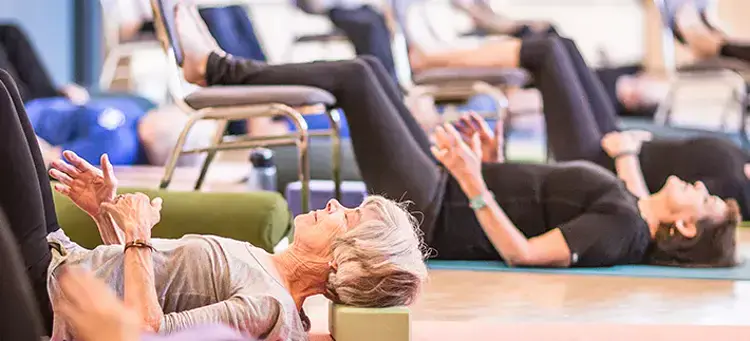
It is often personalized to address specific health concerns such as chronic pain, limited mobility, or emotional stress.
Key Benefits:
- Improved Cardiovascular Health: Breathing exercises combined with gentle movement help lower blood pressure and improve heart function.
- Enhanced Functional Fitness: Therapeutic yoga targets strength and flexibility needed for everyday activities, such as climbing stairs or reaching for objects.
- Pain Management: Regular practice can reduce chronic pain, especially in areas like the back, knees, and hips.
- Mental Wellness: Techniques like guided relaxation and meditation help alleviate symptoms of depression, anxiety, and insomnia.
Sample Practices:
- Supported Bridge Pose: Helps stretch the back and open the chest while relieving tension.
- Legs-Up-the-Wall Pose: A restorative pose that reduces swelling in the legs and calms the nervous system.
- Breath Awareness Exercise: Encourages deep, controlled breathing to enhance relaxation and oxygenation.
Choosing the Right Style
When selecting a yoga style, consider your personal health conditions, physical capabilities, and goals.
Chair Yoga is ideal for those seeking maximum support, Gentle Yoga suits individuals who prefer low-intensity sessions, and Therapeutic Yoga is tailored for those with specific health concerns.
Practicing any of these styles regularly can bring immense benefits, from improved physical health to enhanced emotional resilience, helping seniors lead more vibrant, independent lives.
Benefits of Yoga for Seniors
Yoga offers a holistic approach to maintaining physical health, mental well-being, and emotional resilience, making it particularly beneficial for seniors.
As we age, it becomes increasingly important to adopt practices that promote mobility, strength, and relaxation, and yoga provides all of these in a gentle, adaptable form.
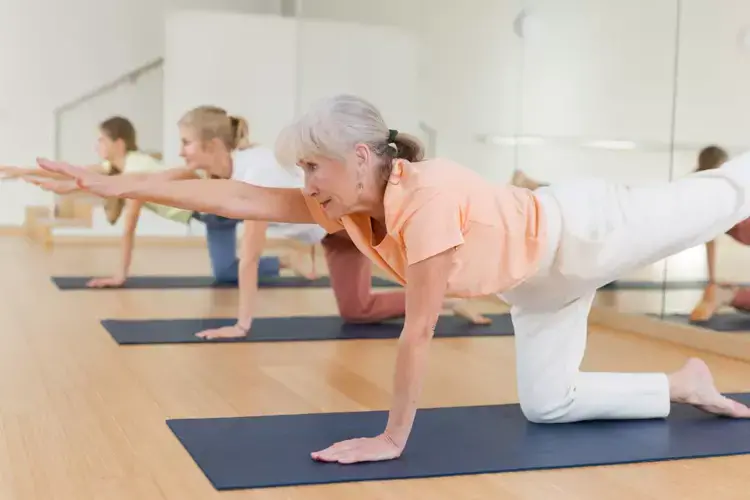
Below is a detailed look at the key benefits of yoga for seniors.
1. Improved Balance and Stability
One of the most significant concerns for seniors is the risk of falls, which can lead to serious injuries.
Yoga strengthens the muscles that support balance, particularly in the legs, core, and hips, while also enhancing proprioception (awareness of body position in space).
How It Helps:
- Yoga poses like Tree Pose or Warrior II train the body to maintain stability, even when faced with uneven terrain or sudden movements.
- Regular practice improves reaction time and coordination, further reducing fall risks.
2. Enhanced Flexibility and Mobility
Stiffness in the joints and muscles can limit daily activities as we age. Yoga’s gentle stretches help lengthen tight muscles and lubricate joints, increasing range of motion and reducing discomfort.
How It Helps:
- Stretching poses like Cat-Cow or Seated Forward Fold target commonly tight areas, such as the lower back, hamstrings, and shoulders.
- Improved flexibility makes activities like bending, reaching, and climbing stairs easier and more comfortable.
3. Strength Building for Functional Fitness
Maintaining muscle strength is essential for performing everyday tasks like lifting groceries, getting out of a chair, or climbing stairs.
Yoga helps build strength without the need for heavy weights or strenuous workouts.
How It Helps:
- Poses like Chair Pose and Plank engage multiple muscle groups, building strength in a balanced and low-impact way.
- Improved strength translates to better posture, increased stamina, and greater independence.
4. Stress Reduction and Emotional Well-Being
Yoga incorporates breathing techniques, meditation, and mindfulness, all of which are proven to reduce stress and promote emotional balance.
For seniors, who may face life transitions such as retirement or the loss of loved ones, yoga provides a safe space for relaxation and reflection.
How It Helps:
- Practices like alternate nostril breathing and guided meditation calm the nervous system and reduce cortisol levels.
- Regular yoga sessions promote feelings of peace, joy, and resilience, helping to alleviate symptoms of anxiety and depression.
5. Better Sleep Quality
Seniors often experience disruptions in their sleep patterns, leading to fatigue and reduced quality of life.
Yoga can address these issues by calming the mind and relaxing the body before bedtime.
How It Helps:
- Gentle poses like Legs-Up-the-Wall or Child’s Pose help release physical tension and prepare the body for restful sleep.
- Breathing exercises slow the heart rate and signal the brain to transition into a state of relaxation.
6. Pain Management
Chronic pain from conditions such as arthritis, sciatica, or lower back issues can limit mobility and diminish quality of life. Yoga provides a non-invasive way to manage and reduce pain.
How It Helps:
- Gentle stretching increases circulation to painful areas, reducing inflammation and stiffness.
- Mindfulness techniques teach practitioners to shift their focus away from discomfort, fostering a more positive outlook on pain management.
7. Cardiovascular and Respiratory Health
Yoga improves cardiovascular and respiratory health by promoting controlled breathing and low-impact movement.
For seniors, this can help lower blood pressure, improve lung capacity, and boost overall endurance.
How It Helps:
- Poses like Bridge Pose and breathing exercises like Ujjayi stimulate the cardiovascular system, enhancing circulation and heart health.
- Improved oxygen intake through pranayama increases energy levels and supports overall vitality.
8. Cognitive Function and Mental Clarity
Regular yoga practice has been shown to improve memory, focus, and cognitive function in older adults.
It enhances brain health by increasing blood flow and promoting relaxation, which supports neuroplasticity (the brain’s ability to adapt and change).
How It Helps:
- Meditation and mindfulness reduce mental clutter, improving attention span and decision-making.
- Learning new poses and sequences keeps the brain active, contributing to mental sharpness.
9. Social Engagement
Yoga classes often foster a sense of community, providing seniors with opportunities to connect with others.
This social interaction can combat feelings of isolation and loneliness, which are common among older adults.
How It Helps:
- Group classes create a supportive environment where seniors can make friends and share experiences.
- Attending classes regularly provides a sense of routine and belonging.
10. Boosted Immune System
Yoga’s stress-reducing effects and its promotion of physical activity can strengthen the immune system.
For seniors, this means better resilience against illnesses and a quicker recovery from minor ailments.
How It Helps:
- Stress reduction lowers inflammation, which is linked to weakened immunity.
- Physical movement stimulates the lymphatic system, aiding in the body’s natural detoxification processes.
The benefits of yoga for seniors extend far beyond the physical. From improved strength and flexibility to enhanced mental clarity and emotional well-being, yoga offers a comprehensive approach to aging gracefully and maintaining independence.
With a variety of styles to choose from and adaptations available, yoga can be tailored to suit the unique needs of every individual.
FAQ Yoga for Seniors
As yoga grows in popularity among seniors, many have questions about its benefits, safety, and how to get started.
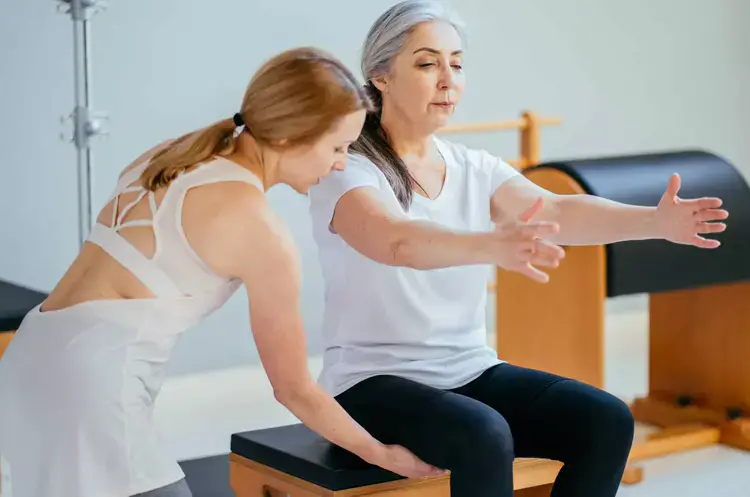
Below is a comprehensive FAQ section that addresses common concerns and provides insights to help seniors embrace yoga confidently and effectively.
1. Is yoga safe for seniors?
Yes, yoga is generally safe for seniors, provided they choose appropriate styles and practice with proper guidance.
Low-impact yoga styles like Chair Yoga, Gentle Yoga, and Restorative Yoga are specifically designed to accommodate older adults and those with limited mobility.
Tips for Safety:
- Consult your doctor before starting yoga, especially if you have pre-existing health conditions.
- Begin with beginner-friendly classes or those tailored for seniors.
- Use props like blocks, straps, or chairs to ensure stability and comfort.
- Avoid poses that strain your neck, lower back, or joints.
2. What are the best types of yoga for seniors?
Several yoga styles cater to seniors, each offering unique benefits:
- Chair Yoga: Perfect for those with mobility challenges, as it allows poses to be performed while seated or using a chair for support.
- Gentle Yoga: Focuses on slow, deliberate movements and extended stretches, promoting flexibility and relaxation.
- Therapeutic Yoga: Tailored to individual health needs, addressing issues such as chronic pain, hypertension, or arthritis.
- Restorative Yoga: Uses props to support the body in restful poses, ideal for deep relaxation and stress relief.
3. How often should seniors practice yoga?
Consistency is key to reaping the benefits of yoga. Seniors can aim for:
- 3–5 times per week: For noticeable improvements in strength, flexibility, and balance.
- Daily practice: Even 10–15 minutes a day can enhance mindfulness and relaxation.
- Start with shorter sessions and gradually increase duration as your comfort level grows.
4. Do I need to be flexible to start yoga?
No, flexibility is not a prerequisite for practicing yoga. Yoga helps improve flexibility over time, making it an excellent option for seniors with limited mobility or tight muscles.
Many poses can be adapted to meet your current level of flexibility, ensuring a safe and enjoyable practice.
5. Can yoga help with arthritis or joint pain?
Yes, yoga is highly beneficial for managing arthritis and joint pain. Gentle movements and stretches improve joint mobility, reduce stiffness, and alleviate discomfort.
Styles like Chair Yoga and Therapeutic Yoga are particularly helpful for those with arthritis.
Key Poses for Joint Health:
- Cat-Cow Pose: Enhances spinal flexibility and reduces stiffness.
- Child’s Pose: Gently stretches the hips and knees.
- Warrior II (with support): Strengthens the legs and improves joint stability.
6. Is yoga good for seniors with limited mobility?
Absolutely. Yoga is one of the most accessible forms of exercise, offering modifications for all levels of mobility.
Chair Yoga, in particular, is ideal for seniors who may have difficulty standing or getting up from the floor. It provides a safe way to enjoy the benefits of yoga without overexertion.
7. Can yoga help with stress and mental health?
Yoga is renowned for its calming effects on the mind. Breathing techniques, mindfulness, and meditation help seniors manage stress, anxiety, and depression.
Regular practice promotes mental clarity and emotional resilience.
Recommended Practices:
- Breathing Exercises: Alternate nostril breathing for balance and calmness.
- Mindful Meditation: Enhances focus and reduces mental clutter.
- Restorative Poses: Encourages deep relaxation and stress relief.
8. Do I need any special equipment for yoga?
Yoga requires minimal equipment, making it an affordable and accessible activity. Recommended items include:
- A non-slip yoga mat for stability.
- Yoga blocks and straps for added support during poses.
- A sturdy chair for Chair Yoga practices.
- Comfortable, breathable clothing that allows for free movement.
9. Can yoga improve my balance and prevent falls?
Yes, yoga is highly effective in improving balance and coordination, which are crucial for fall prevention.
Regular practice strengthens the core, legs, and stabilizing muscles, enhancing overall stability.
Key Poses for Balance:
- Tree Pose: Builds leg strength and improves focus.
- Warrior III (with modifications): Enhances core stability and posture.
- Chair-Assisted Poses: Provides a safe way to practice balancing poses.
10. What should I expect in a senior yoga class?
Senior yoga classes are designed to accommodate the unique needs of older adults. Expect:
- A slower pace and gentle movements.
- Poses adapted for varying levels of mobility.
- Emphasis on breathing techniques and mindfulness.
- Supportive instruction with a focus on safety and comfort.
These classes often foster a sense of community, making them a great opportunity to meet like-minded individuals.
11. Can yoga improve my overall health?
Yes, yoga supports holistic health by addressing physical, mental, and emotional well-being. Benefits include:
- Improved cardiovascular health.
- Enhanced lung capacity and breathing efficiency.
- Reduced symptoms of chronic conditions like hypertension and diabetes.
- Greater independence and quality of life.
Yoga is a versatile and inclusive practice that offers numerous benefits for seniors, from improved physical health to enhanced emotional well-being.
By choosing the right style, practicing regularly, and listening to your body, you can enjoy a safe and fulfilling yoga experience at any age.

